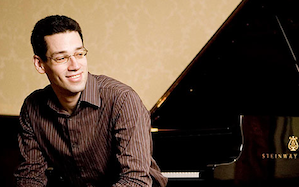Sebastien Ammann shows off his keyboard chops chiefly in the title tune of his new CD. But it's his composer-bandleader acuity that moves his band, Color Wheel, into applying its own signature to "Resilience" (Skirl Records ) and making the band memorable. Sebastien Ammann contemplates form and space. The Swiss keyboardist wrote seven of the nine pieces on the recording. Each piece establishes itself; it sets down on a firm footing right away. No wonder he's attracted to the direct quirkiness of Carla Bley's "King Korn Revisited," the more notable of the two borrowings. I found the pensive, diffuse work called "The Traveller" a bit inclined to woolgathering, but the personality behind it was clear. This band, often making a point of individualism, still seems well matched internally. Besides Ammann, they are Michael Attias, alto saxophone; Samuel Blaser, trombone; Noah Garabedian, bass, and Nathan Ellman-Bell drums. Blaser has a






